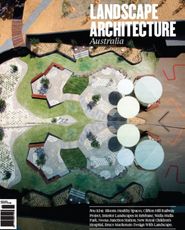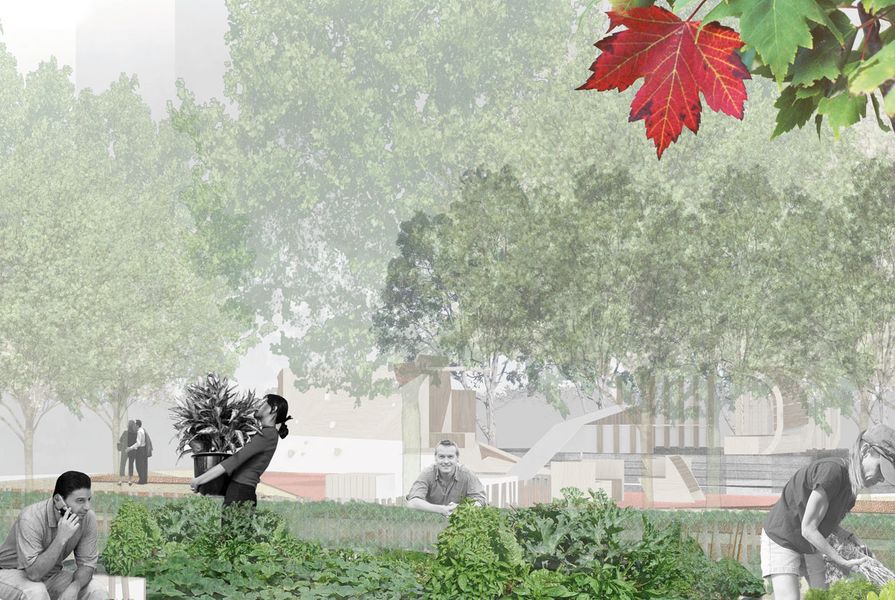Streets occupy a quarter of our public realm. They’re everywhere. Much of the time they are only considered in terms of supplying the needs of vehicles. Pedestrian and cycle amenity and a street’s ability to create a sense of place, to provide a space for community to evolve – these qualities are often overlooked.
AILA Victoria’s inaugural street competition, Street 11, the winners of which were announced in December 2011, was a strategically positioned ideas competition. When councils think streets, AILA wants them to call a landscape architect. The competition aimed to raise the profile of the industry and that of AILA itself, to empower councils to embrace what landscape architecture can deliver, to foster a sense of maturity within the profession, to create dialogue about the role of the street in our public realm, and to provide a suite of inspirational visions for what one specific site might become.
The competition model is interesting: AILA sought expressions of interest from councils, asking them to put forward potential sites. Having the best landscape architects in the land pushing the boundaries of what a council’s particular street might be is a fantastic opportunity to get decision makers and community on board, to receive the kind of ideas that a paid consultant would likely never provide.
Diagram from AECOM’s winning entry, Earth Central, which saw mixed-use towers and a town centre integrated into the main street.
The Shire of Yarra Ranges’ bid won, and the main street of Lilydale became the competition site. All seven councils’ bids were town-centre-style retail strips – no Ramsay Streets, no Western Ring Roads, no laneways.
The Lilydale site had a lot to offer. The sixty-metre-wide Maroondah Highway reserve divides the community; speeding vehicles are unlikely to stop. Lilydale is the end of the rail line, a country town on the edge of suburban sprawl, a gateway to the Yarra Ranges and one of the areas of Melbourne most at risk in recession. It needs something.
AECOM’s winning entry, Earth Central, brought mixed-use towers to the main street, boosting residential numbers; restructured the street to create parkland; created a new town centre; and reshaped the transportation hub. As the jury said, “Earth Central thinks big to demonstrate a realizable approach to social, economic and ecological development.”
Another standout entry was Made in Lilydale, by Office of Other Spaces, which won the award for Best Urban Tactic. In contrast to the top-down AECOM entry, Made in Lilydale suggests a grow-it-from-the-inside approach that is both a branding scheme and a social strategy. It reconsiders Lilydale’s place in the Yarra Valley, presents the street as social ecosystem and emphasizes sustainability and achievement through human ingenuity.
Landscape Australia Consultants’ entry titled Lilydale Green Heart.
Overall, the entries offered sound planning gestures, road reconfigurations, grand bridges, shared spaces, waterway reinvigoration, WSUD, gateway treatments, context-sensitive public art installations, historic reinterpretations, festivals and markets – often in a way that suggested starting points for design rather than end points. Some were one-liners. Some were funny. One embraced bogan culture, creating street lighting trees out of stubby bottles. Dame Nellie Melba’s association with Lilydale struck chords across several entries. The Occupy movement made it to Lilydale.
Of the challenging, subversive, futuristic, Archigram-esque, lateral, emergent, psychedelic or super-bold, there was little.
Braided Streetscape by Tom Harper, Tarryn Boden, Edward Crossland and Jack Barlow.
A number of factors contributed to a slightly ordinary outcome. The competition’s branding was poor, the brief was detail-heavy, with timing that missed generating student entries. Taylor Cullity Lethlean, Hassell, Aspect Studios, Rush Wright Associates, Site Office, Oculus and many others chose not to enter – tough times in the industry? As an inaugural competition, there was hesitancy about the level of competition. It was also only open to registered landscape architects, cutting the field considerably; perhaps the organizers didn’t want an architect or artist to win.
That said, AILA Victoria should be congratulated on the risk undertaken and on the opportunities the Street 11 competition generated. There are few landscape competitions out there, especially in Australia, and this is a welcome contribution. The ongoing series of Street competitions that AILA plans deserves to become a rich and broad dialogue.
Source

Discussion
Published online: 1 May 2012
Words:
Adrian Marshall
Issue
Landscape Architecture Australia, May 2012
























